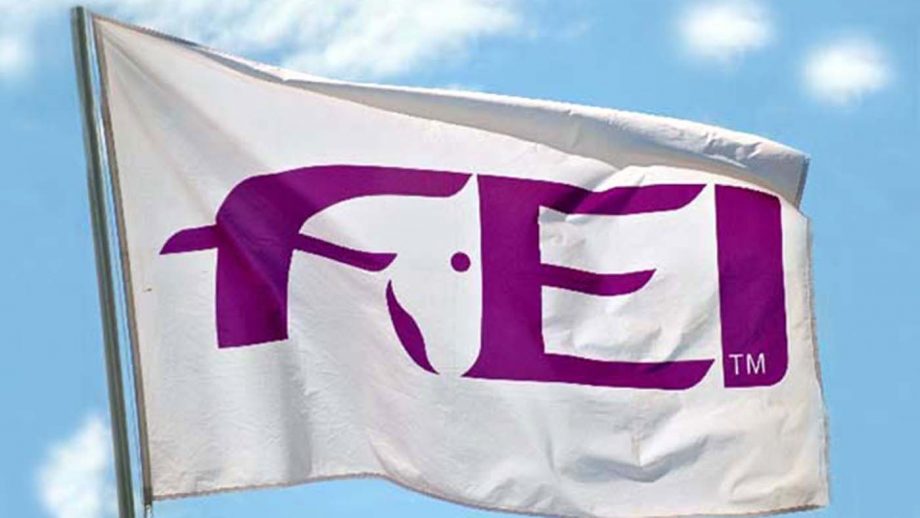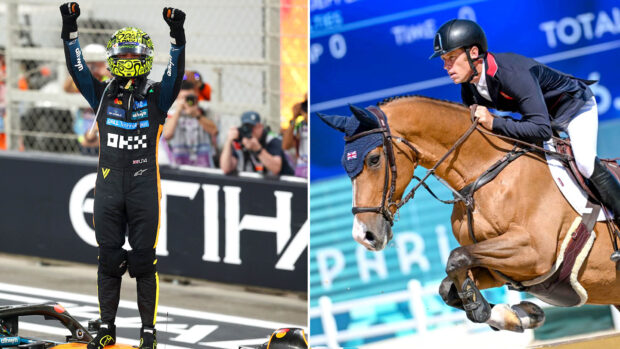Enhanced powers to pull riders up on course and disgruntlement over the short grand prix dressage test feature in the first stage of FEI rule planning for next year.
The first drafts of 2023 rules were released in July – at this stage, these are just proposals, so no changes are as yet set in stone.
Two proposals that stand out in different disciplines are the suggestion that officials be given more powers to stop a combination on course in showjumping classes and across country in eventing. These follow discussions at the FEI Sports Forum (news, 5 and 12 May).
The Swedish and Dutch federations both called for bleeding from the nose (epistaxis) and blood in the mouth always to result in elimination in the showjumping rules revision. Blood on the flanks and non-minor cases of bleeding in the mouth are already covered by elimination after a round.
“Nose blood can occur from bleeding in upper and/or lower airways […] To distinguish from a suspected minor bleeding due to a small laceration of a nostril, the horse should be checked by an FEI veterinarian after the ride,” said the Swedish federation. “Nose blood should be a reason for elimination because of the impact on horse welfare, but also for general perception, i.e., social licence to operate.”
The Dutch federation proposed a similar suggestion for the same reasons, adding that the rule “should also be added to the rules of all other disciplines”.
The FEI jumping committee responded with a broader suggestion that would go further and mean combinations could be stopped mid-round.
“The jumping committee understands the rationale behind this proposed change. However, [it] believes that a broader concept (going beyond just the relatively rare care of blood in the nostrils) is needed in order to give the ground jury the clear authority to take action where there are serious horse welfare concerns,” it responded.
It suggested instead that the ground jury president (or designee) has the power to eliminate a horse and rider at “their sole discretion” if they decide “it would be contrary to the principles of horse welfare to allow the combination to continue the round”.
The eventing “dangerous riding” rule also features a proposed change to give certain officials greater powers to stop combinations on course. The ground jury and technical delegate already have authority to pull up and eliminate a horse and rider for dangerous riding, and it is suggested that the course-designer should also be able to do so.
In terms of eventing safety, an overhaul of rider categorisation and qualification for horses returning to top level after a break are mooted.
“Statistics have highlighted a significant increase in horse fall risk when a horse returned to play at four- and five-star levels [who] has not competed at FEI competitions for 18 months or more,” states the reasoning. “The eventing risk management steering group recommends adding an additional requirement to ensure that horses have competed at FEI events within the previous months before competing at four- and five-star.”
This means that in the 13 months prior to competing at four- or five-star, horses must complete a CCI3*-S or -L to compete at CCI4*-S; a CCI4*-S to compete at a CCI4*-L; and either a CCI4*-S or -L to compete at five-star.
The risk management steering group and data analytics firm EquiRatings have suggested halving the timeframe of rider categorisation from its current eight years to rolling four, backed by maths. Riders are put into categories, based on their experience, which have a bearing on the minimum eligibility requirements (MERs) they need at each level.
“The eventing committee supports reduction of the timeframe of MERs to ensure more current MERs are taken into account for the athlete categorisation,” states the FEI eventing committee response.
Debate over the future of the short grand prix test featured heavily in the dressage proposals.
“We believe there should be further discussion about the relevance of the short grand prix test, and/or the limited use of this test in competition, as it does little to enhance the sport for spectators and is not widely supported by riders,” stated British Equestrian.
The US also called for it to be “evaluated” with further feedback, adding it is possible there “have been unintended consequences”.
The German federation and the International Dressage Riders Club called for the “abolishment” of the short grand prix as it “is not in the horse’s best interest”.
“The sequence of the individual exercises is too close together. Furthermore, it is clearly more difficult to ride than the normal [grand prix] and thus disadvantages weaker riders,” they said.
The International Dressage Trainers Club agreed on the points regarding the movements being too close together and what this means for horses and “disadvantaging weaker riders”.
It suggested that it only be used when the grand prix is scheduled during prime time and there are “clear restrictions in arena availability”.
The FEI board agreed in May that organisers of World Cup qualifiers can choose to use either the short or the regular grand prix at each fixture for the 2022/23 series. The regular grand prix test will be used at the final.
National federations and those involved in the sport have until 24 August to comment on the proposals, before the final draft is published, which will be voted on at the general assembly in November.
You might also be interested in:

Subscribe to Horse & Hound magazine today – and enjoy unlimited website access all year round

Eventing ground jury member Christian Landolt: ‘Our decisions can determine who wins a gold medal’

Questions remain over horse sport at Paris 2024 Games with no organising committee in place

New para test names could be on the cards in rules overhaul

Errors in eventing results affect safety and much more, warns FEI
Horse & Hound magazine, out every Thursday, is packed with all the latest news and reports, as well as interviews, specials, nostalgia, vet and training advice. Find how you can enjoy the magazine delivered to your door every week, plus options to upgrade your subscription to access our online service that brings you breaking news and reports as well as other benefits.




